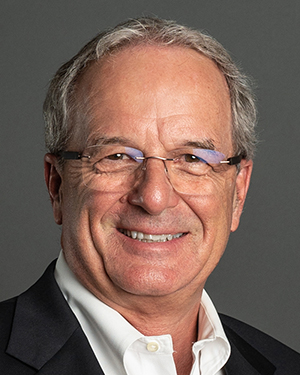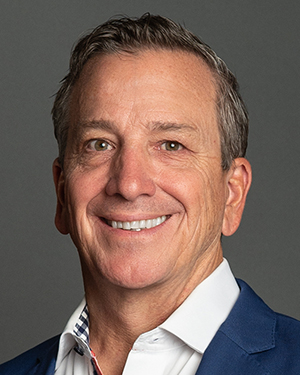Earlier this year, MC Companies launched Operation 25K—an initiative to grow the Scottsdale, Ariz.-based firm from 6,500 apartment units to 25,000 apartment units under ownership by 2029.
The new strategic initiative coincides with MC Companies’ 20th anniversary. Ross McCallister and Ken McElroy joined forces in 2001 after meeting through the Arizona Multi-Housing Council. As principals of MC Companies, the duo has built a team of roughly 210 employees.
Today, the firm owns 327 properties totaling roughly 7,000 units with a portfolio value of more than $1 billion. The assets are located in nine markets across Arizona, Oklahoma and Texas.
Operation 25K requires MC Companies to successfully purchase 1,000 units in 2021 and more than 2,500 units annually thereafter. It will also involve the construction of 1,100 new units as part of the firm’s development pipeline and will nearly double the MC Companies team to more than 400 employees over the next two to three years. Last month, the firm hired David Mannion as its chief operating officer to lead its growth initiative.
To spread the word about MC Companies and real estate investing, McCallister and McElroy launched an educational YouTube channel in 2020. McElroy’s social media platform as a business author helped push the channel to nearly 300,000 subscribers. (McElroy has written several bestselling books, including The ABC’s of Real Estate Investing, The Advanced Guide to Real Estate Investing and The ABC’s of Property Management.)
MC Companies also hosts a weekly podcast, Real Estate Strategies with Ken McElroy, with all kinds of different guests. It gets about 20,000 downloads a week. Together, the YouTube channel and the podcast generate 100 to 200 new investors for the firm a month, according to the co-founders. WMRE recently spoke with McElroy and McCallister about the firm’s investment strategy, its equity raising efforts and its social media success.
This Q&A has been edited for length, style and clarity.
WMRE: What is MC Companies’ investment strategy?
 Ross McCallister: We invest in value-add multifamily, mostly workforce housing and apartments for middle-income renters. We’re looking for a management repositioning story in markets where there’s a lot of job growth. For example, we have a deal that we’re buying in Austin that’s had the same owner for the past 17 years, and there’s a lot of work needed on the interior and exterior. Overall, we’re very bullish on the multifamily market today. There’s terrific demand, and supply growth doesn’t seem to be excessive.
Ross McCallister: We invest in value-add multifamily, mostly workforce housing and apartments for middle-income renters. We’re looking for a management repositioning story in markets where there’s a lot of job growth. For example, we have a deal that we’re buying in Austin that’s had the same owner for the past 17 years, and there’s a lot of work needed on the interior and exterior. Overall, we’re very bullish on the multifamily market today. There’s terrific demand, and supply growth doesn’t seem to be excessive.
WMRE: What was MC Companies original vision and mission? Has that changed or evolved?
 Ken McElroy: When Ross and I first started MC Companies, the ultimate goal was to invest in value-add multifamily. But when the market is going down and lenders have the assets, there is no value-add. During the housing crisis, we bought properties directly from banks. The great thing about buying from banks during a downturn is when the market started to recover, we were able to implement a value-add strategy on our own properties. We call that “getting a second bite at the apple.”
Ken McElroy: When Ross and I first started MC Companies, the ultimate goal was to invest in value-add multifamily. But when the market is going down and lenders have the assets, there is no value-add. During the housing crisis, we bought properties directly from banks. The great thing about buying from banks during a downturn is when the market started to recover, we were able to implement a value-add strategy on our own properties. We call that “getting a second bite at the apple.”
In the beginning, we focused on investing first and foremost in Arizona, which ended up being Ground Zero for the housing crisis. That’s when we decided to look at where people had jobs and hit on Texas and Oklahoma, which led to our growth and expansion of our portfolio to 10,000 units by 2013.
During our early years, the housing market was crashing, people were falling out of single-family and into multifamily, and there wasn’t any building going on either. I think that’s one of the reasons we’ve had such a great run.
WMRE: What do you think differentiates MC Companies from other multifamily investors?
Ken McElroy: Ross and I have more than 30 years of real estate investing experience. We’ve been through several cycles. Ross went through the downturn in the 1980s as an investor, and I came out of college during the RTC banking crisis. Because of that experience we saw a lot of opportunity to be able to take advantage of the financial crisis in 2008. Having that experience is great because we have someone on the gas and someone on the brakes at the same time. Being super conservative and overdelivering is what got us where we are today.
Ross McCallister: Our investment strategy differentiates us, and so does our management approach. We manage our portfolio in-house. We love to be able to sit down with our regional property directors and make adjustments. We think that’s a huge benefit to our investors because the property management is aligned strategically with ownership.
WMRE: What type of investors does MC Companies target? Do you anticipate your investor base will change in the near future?
Ken McElroy: Our strategy is to exclusively target high-net-worth investors for our acquisition deals. Today, we have about 600 active investors and another 2,400 that want to invest with us.
We’re blessed with a very loyal group of investors. We have people who are in every single deal with us. We’ve never lost money and never done a cash call. Our minimum investment is $100,000, though the average is closer to $250,000.
Looking forward, we plan to partner with institutional investors for our development deals. We recently hired a head of capital markets to find the best partners for us.
WMRE: How does MC Companies attract new investors?
Ken McElroy: We started with our network—our friends and family. Then we started doing roadshows for high-net-worth investors. It was a small group of folks at first, and as we paid people back, they told other people, and our list of investors grew and grew. With the power of the internet, more people started to find us.
We raise money on a deal-by-deal basis. When we raise money, we share the business plan with our database of investors, and it’s first come, first serve. All the investors who register can invest in the deal based on when they wire the money.
WMRE: How does the firm communicate and keep the conversation going with its existing investors to make sure they are on the same page regarding strategy, targeted returns etc.?
Ken McElroy: We use Investor Management Services (IMS) for our investor portal. We have a quarterly report that goes along with the quarterly distribution, and we hosted a virtual investor summit in mid-October. We also send out a weekly newsletter, and we have two full-time IR staff [members] dedicated to phone and email inquiries.
WMRE: What is the range of returns that you expect on your investments?
Ross McCallister: Average annual returns of approximately 15 percent to investors.
WMRE: What is your average hold period?
Ken McElroy: We don’t have an average hold period. It ranges from deal to deal. We like being able to hold the deal to match the market.
Early on, we realized that the equity wags the dog—it drives the deal, particularly the hold period. That’s why we started focusing on high-net-worth investors. Not having that big institution telling us to sell at a particular time means that we’ve been able to sell at our discretion. When a market is on a run, we might hold for a little longer and refinance along the way. We’re providing infinite returns for our investors and focusing on cash flow and tax strategies as opposed to driving IRR. We have many deals that we’ve owned for 20 years and refinanced twice, and we’re still enjoying cash flow from them.
For example, we might have bought a property for $10 million or $20 million, and it’s worth a lot more today. If we sold it, our investors would just ask us to invest that money again in another property. So, we thought, “Why not give the original capital back to our investors tax- free (because it’s debt)?” With that strategy, our investors can continue to reap the benefits of depreciation and cost segregation. It’s worked really well for us.
WMRE: What markets do you feel are particularly attractive? Why?
Ken McElroy: We currently own properties in Phoenix, Tucson and Flagstaff in Arizona, as well as properties in the Texas markets of Austin, Dallas-Fort Worth, Houston and San Antonio. We also own assets in Oklahoma City and Tulsa.
Our markets are all trending up, particularly those in Texas. They’ve been really good markets for us.
We’re certainly thinking about expanding into other markets, especially in the Southeast. There are markets there that are growing as people migrate to them, and our growth has to be in that direction. We are trying not to spread ourselves too thin, though.
WMRE: Can you tell us a bit more about MC Companies’ development activity?
Ken McElroy: We’ve always been involved in development, but it’s becoming a larger part of our strategy. Right now, we have a 330-unit property under construction and four more deals in the pipeline that will require $80 million in capital. We are in the process of looking at half a dozen institutional groups that are interested in doing those deals with us.
WMRE: What have been the biggest challenges you’ve faced in terms of raising capital and sourcing deals?
Ross McCallister: Investors come to us. We have huge brand loyalty, and the trust we’ve built with our existing investors has attracted a great deal of new investors. A few weeks ago, we put out a deal to raise $29 million, and we had $50 million in commitments from our high-net-worth investors. We get calls from institutional investors all the time, looking to invest with us.
The bigger challenge is finding good deals and good people. Human capital is far harder to come by than equity capital.
WMRE: The multifamily sector is one of the hottest and most competitive asset classes today. How is MC Companies facing competing buyers and coming out on top?
Ken McElroy: We have an acquisitions director who works with brokers and also searches for off-market deals where we work with owners directly. We make multiple offers a week on different assets in various cities. As part of our “boots on the ground” due diligence process, we have our management team verify rents. We also have our own proprietary underwriting software that we developed, which helps us [win deals].
On the other side, we have buyers coming to us and making unsolicited offers. We always verify those offers with brokers.
WMRE: What plans do you have for MC Companies in the new year?
Ken McElroy: More than a year ago, we decided to grow to 25,000 units through a combination of acquisition and development. In 2022, our goal is to buy six properties, and I feel confident we’ll meet that goal. We have 500 units in escrow now that will close next year.
This country is facing a big housing issue and a big affordability problem. As long as we’re buying and building in the right areas, we’re going to have nice rent growth and some nice returns for our investors.
WMRE: What is the biggest success that the company has experienced? What is the biggest failure?
Ken McElroy: Our biggest failure was getting caught in the condo conversion craze. We bought several thousand units and sold them. It was like one big flip. Our goal is to own assets and have passive income and tax advantages, and in the end, we didn’t own anything, and we lost money because of the unavoidable taxes. I wish we still had those assets.
Ross McCallister: Our culture and our philanthropy are our biggest successes. We’ve won many awards for Best Companies to work for in Arizona for women, and Best Companies to work for in multifamily. We have a record of winning these awards year after year since 2015.
MC Companies’ Sharing the Good Life Foundation has supported more than 500 charities in Arizona, Oklahoma and Texas through employee requested grants. We have a full-time director of philanthropy who manages the foundation. Her entire job is giving away money.





